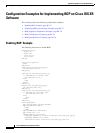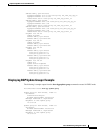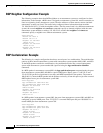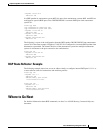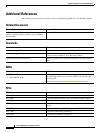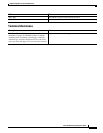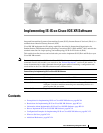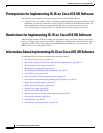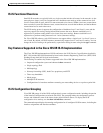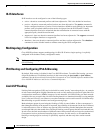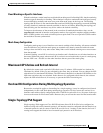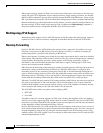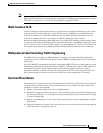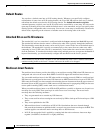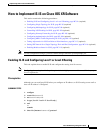
Implementing IS-IS on Cisco IOS XR Software
Prerequisites for Implementing IS-IS on Cisco IOS XR Software
RC-84
Cisco IOS XR Routing Configuration Guide
Prerequisites for Implementing IS-IS on Cisco IOS XR Software
The following are prerequisites for implementing IS-IS on Cisco IOS XR software:
• You must be in a user group associated with a task group that includes the proper task IDs for IS-IS
commands. Task IDs for commands are listed in the Cisco IOS XR Task ID Reference Guide. For
detailed information about user groups and task IDs, see the Configuring AAA Services on
Cisco IOS XR Software module of the Cisco IOS XR System Security Configuration Guide.
Restrictions for Implementing IS-IS on Cisco IOS XR Software
When multiple instances of IS-IS are being run, an interface can be associated with only one instance
(process). Instances may not share an interface. Additionally, if Multiprotocol Label Switching traffic
engineering (MPLS TE) is being employed, then MPLS must be enabled for only one instance. The
MPLS process is not multi-instance aware.
Information About Implementing IS-IS on Cisco IOS XR Software
To implement IS-IS you need to understand the following concepts:
• IS-IS Functional Overview, page RC-85
• Key Features Supported in the Cisco IOS XR IS-IS Implementation, page RC-85
• IS-IS Configuration Grouping, page RC-85
• Multitopology Configuration, page RC-86
• IPv6 Routing and Configuring IPv6 Addressing, page RC-86
• Limit LSP Flooding, page RC-86
• Maximum LSP Lifetime and Refresh Interval, page RC-87
• Overload Bit Configuration During Multitopology Operation, page RC-87
• Single-Topology IPv6 Support, page RC-87
• Multitopology IPv6 Support, page RC-88
• Nonstop Forwarding, page RC-88
• Multi-Instance IS-IS, page RC-89
• Multiprotocol Label Switching Traffic Engineering, page RC-89
• Overload Bit on Router, page RC-89
• Default Routes, page RC-90
• Attached Bit on an IS-IS Instance, page RC-90



